
by Deep Green Resistance News Service | May 6, 2013 | Indigenous Autonomy, Mining & Drilling, Protests & Symbolic Acts
By Confederated Tribes of the Goshute Reservation
On Saturday, May 4, 2013, approximately 70 Native Americans representing the Confederated Tribes of the Goshute Reservation, Wells Colony, Elko/TeMoke Tribe, Battle Mountain and Yomba Shoshone along with Tribal members from the Northern Ute, Cheyenne-Arapaho, Navajo, Cherokee and non-natives begin a Walk/Run from Wells, Nevada towards Caliente, Nevada, a distance of approximately 272 miles.
After a blessing and prayer for the water, the group began the long trek walking and running on U.S. 93 towards Ely, Nevada.
The walk/run is to bring attention to the proposed Southern Nevada Water Authority’s (SNWA) proposed water theft from northeastern Nevada and for prayers to save the sacred water for the children not yet born, the animals, plants, protection of traditional medicine, traditional food and ceremonial places.
Along the route willows will be planted with prayers for the water. Camp is set up each evening along the side of the road.
As of today, (Monday — May 6, 2013) the group has reached the junction of U.S. 93 and 93A a distance of approximately 79 miles. The walk/run will arrive in Ely, Nevada on or about Monday evening and will camp on the Ely Shoshone Reservation for two days before continuing to Caliente, Nevada.

by Deep Green Resistance News Service | May 4, 2013 | Defensive Violence, Mining & Drilling, Property & Material Destruction, Repression at Home
By Sandra Cuffe
This article was originally published by Upside Down World on May 2, 2013, and is republished here with permission from the author.
With the world’s attention focused on the on-again off-again genocide trial of former Guatemalan dictator Efraín Ríos Montt and his head of military intelligence in Guatemala City, there has been little international reporting on other events in the Central American nation. Meanwhile, as the trial continues, conflicts involving rural communities and Canadian mining companies are escalating, to the point that a State of Siege was declared last night.
Fifty miles southeast of the capital, private security guards working for Vancouver-based mining firm Tahoe Resources shot and wounded several local residents on Saturday in San Rafael Las Flores, on the road in front of Tahoe’s El Escobal silver mine. The mining company’s head of security was arrested while attempting to flee the country. A police officer and a campesino were killed during conflicts earlier this week. Through it all, demonstrations against the mining project have continued amid conflicting reports and government misinformation.
Following a Cabinet meeting late last night, Guatemalan President Otto Pérez Molina declared a 30-day State of Siege in four municipalities around the El Escobal mining project: San Rafael Las Flores and Casillas in the department of Santa Rosa, and Jalapa and Mataquescuintla in the department of Jalapa. The measure is in effect as of today. Initial reports indicated that the constitutional rights suspended include freedom of movement, freedom of assembly and protest, and certain rights of detainees and prisoners.
Even before the measure was declared, communities were denouncing army mobilization in the region last night. When he announced the State of Siege, Pérez Molina stated that security forces reported for duty at three military bases last night and that operatives would begin early this morning.
“We fear for the lives of our leaders,” stated a message circulated online by the Xinka People’s Parliament, denouncing the mobilization of armed forces in Jutiapa with the alleged intention of arresting Xinka leaders in Santa María Xalapán, Jalapa. “We’re returning to the 1980s, with the persecution of leaders, extrajudicial execution and forced disappearance.”
Two weeks ago, Guatemalan Minister of the Interior Mauricio López Bonilla announced that executive and judicial officials were analyzing the possibility of declaring a State of Emergency in at least 30 municipalities throughout the country, due to violence. The government, according to the April 16 announcement, had anticipated finalizing the details of its evaluation of “red zones” within two weeks and implementing the measures suspending constitutional rights, possibly within three weeks to a month. At the time, mining was not mentioned.
The suspension of constitutional rights did not come as a surprise to Moisés Divas, Coordinator of the Diocesan Commission in Defense of Nature (CODIDENA) in Santa Rosa.
“The extent of the reaction from both the company and the State has completely violated people’s constitutional right to protest,” Divas told Upside Down World in a telephone interview on Monday. At the time, he was in Guatemala City accompanying some of the wounded San Rafael Las Flores residents at the Office of the Public Prosecutor, where they were being seen by a medical examiner.
“They no longer even respect human life. The government officials who should be at the service of the population have now turned against the population to defend a transnational project,” said Divas.
Tahoe Resources owns the El Escobal mine, but Vancouver-based mining giant Goldcorp retained a 40 percent ownership interest in Tahoe when it sold the project in 2010. Still under construction, El Escobal was granted an exploitation license by the Guatemalan government on April 3 amid widespread protest and threats against opponents. Five days later, the community-based movement against mining in San Rafael Las Flores began an ongoing resistance camp on privately owned land less than 200 feet from the mine’s front gate. Despite a violent eviction on April 11, when 26 people were arrested and held for four days before being released without charges, the resistance maintained its presence at the camp.
On Saturday, April 27, a group of local residents left the resistance camp along the road that passes directly in front of the mine, heading towards the community of El Volcancito. When they passed the front gate, security guards opened fire on them from the other side.
“The mining company ordered the shooting against people there, injuring more than 10 people with gunshot wounds,” said Divas. “Six of them were taken to get medical assistance in Cuilapa and two to the Roosevelt Hospital in the capital, because they found evidence of serious injury.”
Wilmer Pérez, 17, Antonio Humberto Castillo, 48, Noé Aguilar Castillo, 27, and Érick Fernando Castillo, 27, were all released after medical treatment in Cuilapa. Adolfo García, 57, and his son Luis García, 18, were taken to Guatemala City. Adolfo García was later released, but his son Luis remained in hospital care. The 18-year-old was shot in the face, suffered extensive damage to his jaw, lip, and teeth, and requires maxillofacial surgery.
Alberto Rotondo, Tahoe’s Chilean head of security, was overheard giving the order to shoot, among other comments and insults, while some of the injured have stated that they saw him draw and fire a weapon as well. According to a Prensa Comunitaria article posted that same night, local witnesses said that Rotondo “ordered [the security guards] to shoot, saying that they are fed up with all this garbage, referring to our people. They insulted them, and then they loaded their rifles and began to shoot at them.”
Rotondo was later arrested at the airport attempting to flee the country on Tuesday morning, accused of attempted homicide for his role in the April 27 shooting. After his case was transferred from the capital to Santa Rosa, he was sent to the maximum security prison in Cuilapa. According to Prensa Libre coverage, a judge in Guatemala City also issued arrest warrants for three other individuals with regards to Saturday’s shooting.
On Monday morning, Minister of the Interior Mauricio López confirmed that El Escobal mine security guards had shot at local residents. But despite all evidence to the contrary, he also said that the residents had been attempting to forcibly enter the mine site at the time and stated that only rubber bullets were used.
Oscar Morales García, a member of the Committee in Defense of Life in San Rafael Las Flores that has been mobilizing against the mining project and organizing community consultations, says the statements are simply untrue.
“There are people who were shot with real bullets. One has a bullet lodged in his body and it was decided that it’s better if it stays there instead of taking it out. And the other youth, the son, whose face was disfigured when he was shot. Those aren’t rubber bullets,” he told Upside Down World in a telephone interview on Monday.
Morales García also says that there may have been less evidence had it not been for the actions of local community residents on Saturday.
“After the attack against those six people, the national police force and the mine guards came out, intending to remove evidence, to drive their vehicles over the crime scene, and to pick up the bullet casings. But some of the people who were there didn’t let that happen. They told the police to get back and then protected the crime scene,” he said. “After six, eight hours of waiting for representatives from the Office of the Public Prosecutor to arrive, yes, they found evidence. The evidence was there. The crime scene had been protected by civilians.”
López Bonilla’s assertion that rubber bullets were used wasn’t the only government statement to be called into question on Monday. Presiding over the signing of a new royalty agreement between Tahoe Resources and the Ministry of Energy and Mines, Guatemalan President Otto Pérez Molina said that there is community support for the mine.
According to the new voluntary contribution agreement, Tahoe will pay five percent in royalties instead of the one percent required by the country’s mining legislation. The additional funds will be distributed to several different municipal governments in the departments of Santa Rosa and Jalapa. The mayor of San Rafael Las Flores was present at the signing ceremony in the capital along with several other elected municipal leaders.
“I saw the statements made by President of the Republic Otto Pérez Molina, saying that the population of San Rafael supports the mining company,” said CODIDENA Coordinator Moisés Divas. That same day, he said, San Rafael Las Flores residents were out in the streets in huge numbers to protest the agreement. “I don’t know what argument or foundation he used to say that people support the mining company.”
Community consultations are underway in San Rafael Las Flores. Eight have been carried out in as many communities. More than 1,200 people have said no to mining and only eight individuals have voted in favor of mining, said both Divas and Morales García. The overwhelming majority of the thousands of people who participated in municipal-level consultations in other municipalities in Santa Rosa – Casillas, Nueva Santa Rosa and Vieja Santa Rosa – and Mataquescuintla in neighboring Jalapa have also rejected mining.
Morales García also rejected the allegation of local support. “The government just announced [on Monday] that we’re merely two or three people who don’t want mining in San Rafael, that everyone else agrees with it,” he said. Beyond just marginalizing the resistance, said Morales García, the government was acting in concert with the Minera San Rafael, Tahoe Resources’ Guatemalan subsidiary.
“What actually happens is one thing, and the version managed by the government and the mining company is something else. The best Minera San Rafael spokesperson here is Minister López Bonilla,” he added.
In 1982, then Second Lieutenant Mauricio López Bonilla was part of the “La Juntita” Young Officers Advisory Group working for the military junta led by Ríos Montt. He retired from the Army as a Lieutenant Colonel in 1997, shortly after the Peace Accords officially ended four decades of conflict in 1996. He later became the electoral campaign manager for current President Otto Pérez Molina, whose role in the brutal counterinsurgency campaign of the early 1980s in the Ixil region has again come into question during the genocide trial. López Bonillla was sworn into his Cabinet position when Pérez Molina began his term in January 2012.
A whole new set of statements made by López Bonilla came under fire on Tuesday, after a police officer was shot and killed in San Rafael Las Flores. The Minister of the Interior publicly accused Xinka leaders of orchestrating an operation to take 23 police officers hostage in Jalapa.
Community and regional leaders representing the non-Mayan Indigenous Xinka population in southeastern Guatemala have been outspoken opponents of El Escobal and mining in the region. Four Xinka community leaders were abducted by armed masked men on March 17 while on their way home to the neighboring department of Jalapa after observing the community consultation process in El Volcancito, San Rafael las Flores.
Rigoberto Aguilar and Roberto López, both local leaders of the Indigenous Xinka Community of Santa María Xalapán, managed to escape. Roberto González Ucelo, President of the Indigenous Xinka Community of Santa María Xalapán and of the Xinka Parliament, survived after a police operative was sent in. But Exaltación Marcos Ucelo, Secretary of the Xinka Parliament, was found dead. Now six weeks later, the Xinka Parliament has denounced that no progress has been made to bring those responsible to justice.
In an atmosphere of heightened tension after Saturday’s shooting by El Escobal security forces, communities mobilized in San Rafael Las Flores and Jalapa against the mining project on Monday, denouncing the agreement being signed in the capital between Tahoe and the government and the presence of municipal authorities at the event. Conflicts involving the national police force ensued in both locations. In San Rafael Las Flores, a police officer was shot and killed on Tuesday morning when police attempted to evict the community resistance. In Jalapa, 23 police officers were taken hostage and disarmed on Monday afternoon at a blockade between the town of Jalapa and Mataquescuintla. A massive police response involving some 2,000 officers was sent to rescue the first group. In the process, on Tuesday morning, several police officers were wounded and a campesino was killed. Police vehicles were also torched and destroyed in both locations.
On Tuesday, Vice Minister of the Interior Edy Juárez publicly stated that community leader Rudy Pivaral was responsible for inciting violence in San Rafael Las Flores, leading to the death of police officer Eduardo Demetrio Camacho Orozco. Minister of the Interior López Bonilla publicly accused Xinka leaders Roberto González Ucelo and Rigoberto Ucelo of orchestrating the conflict in Jalapa and said he would hold them responsible for any acts carried out with the weapons taken from the police officers when they were held hostage.
“They hold me responsible for all the problems that occurred,” Xinka leader Roberto González Ucelo told the Independent Media Center (CMI) on Wednesday. “I have proof that I went to Cuilapa, I was in Cuilapa, so I didn’t organize [anything] because I was on my way to Cuilapa.” There was evidence of the trip, he said, from various receipts and the registration of his visit in the municipal office in Cuilapa.
An outpouring of support for the Xinka Parliament, community leaders and the local resistance to mining came from Indigenous, campesino and human rights organizations following the government accusations.
“The atmosphere is really tense here,” González Ucelo said of Santa María Xalapán. “I don’t know what’s going to happen.”
On Wednesday, the Office of the Public Prosecutor requested the arrest of 18 people on charges related to the conflicts earlier this week in San Rafael Las Flores and Jalapa. However, the suspension of constitutional rights regarding legal detention and interrogation under the State of Siege leaves community leaders and outspoken mining opponents in the region vulnerable to unchecked repression.
Largely silent throughout most of the recent developments, Tahoe Resources issued a statement on Wednesday, May 1, “to clarify inaccurate media reports about violent incidents that have broken out in recent days.” In line with the company’s response after the murder of Xinka leader Exaltación Marcos Ucelo, Tahoe claimed the incident in Jalapa had nothing whatsoever to do with the mine.
Regarding protests against the mining project, Tahoe Resources CEO Kevin McArthur stated that, “while many of these activities have been peaceful and respectful, violence from outside influences has escalated in the past weeks since we received our operating permit,” according to the statement.
“Tahoe’s Guatemala security manager was detained by authorities on Tuesday,” the company confirmed, but alleges the arrest was simply “due to the highly charged atmosphere and inaccurate press reports about Saturday’s events.”
Tahoe is also sticking to López Bonilla’s initial claim that only rubber bullets were used, adding that the Escobal security force acted to repel a hostile protest of some “20 people armed with machetes” at the mine gate. “We regret any injuries caused by rubber bullets, but we take the protection of our employees and the mine seriously,” said McArthur, according to the statement.
“As a result of the incidents in recent days, work at the mine has slowed and construction and development is expected to return to normal by Thursday,” according to the company statement.
But if the past couple months are any indication, there is no real normal when it comes to El Escobal. Normal has been ongoing community-based resistance in the face of violent repression, which will likely escalate under the State of Siege.
For Oscar Morales García, the “violence from outside influences” has come from Tahoe Resources. “The truth here is that the social peace was shattered when the mining company came to San Rafael,” he told Upside Down World.
Morales García knows that Annual General Meetings are coming up this month for Goldcorp (today, May 2, in Toronto) and Tahoe (May 9 in Vancouver), and he has a message for the shareholders of both companies.
“Tahoe’s silver, minerals and gold in San Rafael are now stained with blood. It may be true that the government authorized an exploitation license, but what would be called a social license for Minera San Rafael doesn’t exist here. It doesn’t exist and it never will,” said Morales García.
“The message for the shareholders is loud and strong,” he continued. “You don’t have a social license. The resistance is just beginning. And we’re in it for the long haul.”
From Upside Down World: http://upsidedownworld.org/main/guatemala-archives-33/4270-state-of-siege-mining-conflict-escalates-in-guatemala
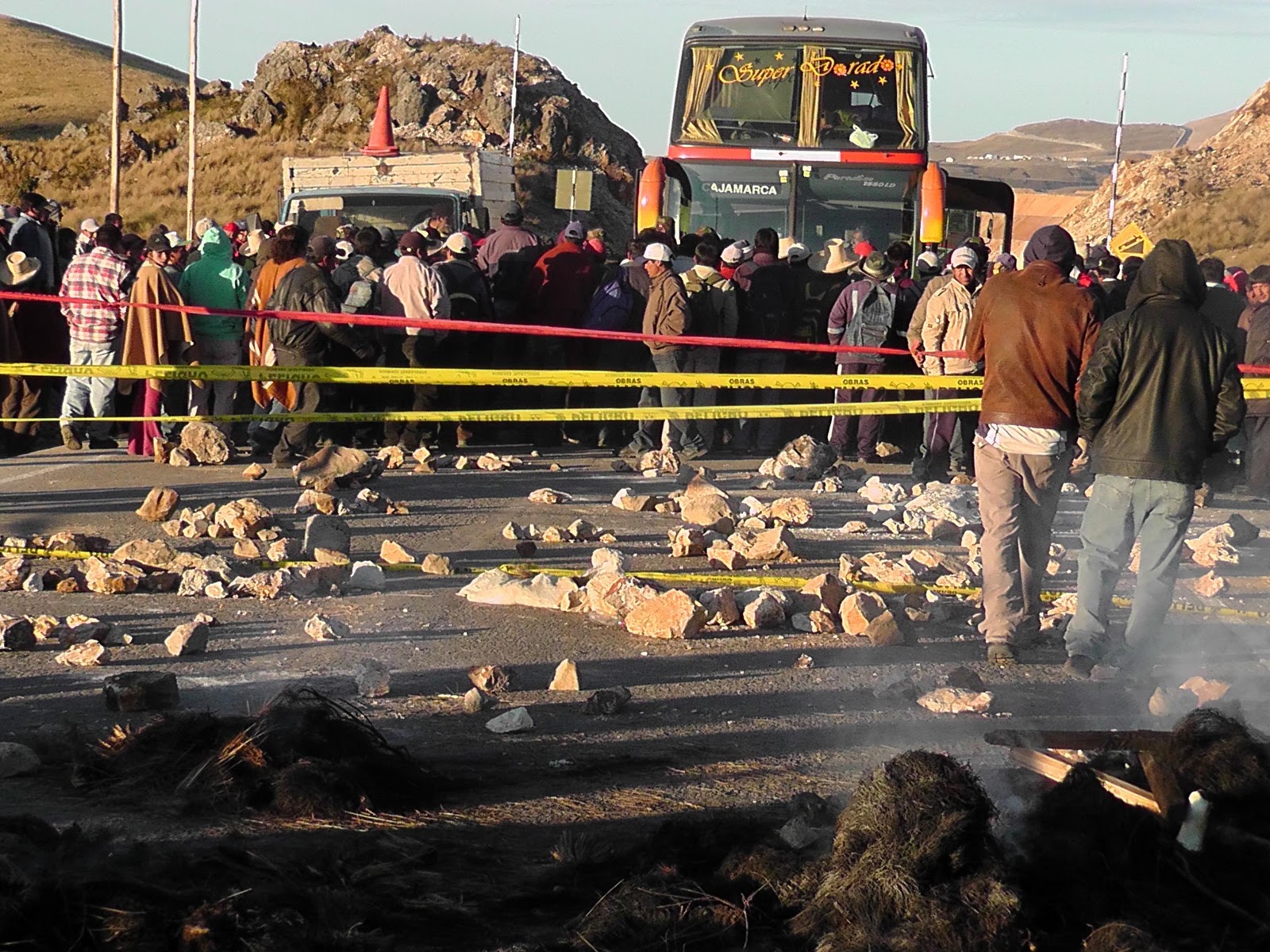
by Deep Green Resistance News Service | May 1, 2013 | Lobbying, Mining & Drilling, Property & Material Destruction, Strategy & Analysis
Mining is one of the most viscerally destructive and horrific ways in which the dominant culture—industrial civilization—enacts its violence on the living world. As entirely and unequivocally destructive as this society is, few other industrial activities are as horrifically confronting as mining. Whole landscapes are cleared of life as communities—most often indigenous or poor—are forced from their homes. Mountains level to piles of barren rubble which leach countless poisons, scouring life from whole watersheds. Pits of unimaginable size are carved from the bones of the earth, leaving moonscapes in their wake.
Besides the immediate damage to the land at the site of operations, the destruction extends through the uses its products are put to. In this way, mining is crucial to the continued function of industrial civilization, supplying many of the raw materials that form the material fabric of industrial society. Steel, aluminum, copper, coal, tar sands bitumen, cement; the materials extracted through mining are central components of industrial civilization in an immediate and physical way. They are the building blocks of this society.
Fortunately, as is the way of things, where there is atrocity and brutalization, there is resistance. There has been a lot of militant anti-mining action happening recently; in the last few months alone there have been several inspiring incidents of people taking direct militant action against mining projects and infrastructure.
In February, several dozen masked militants raided the Hellas gold mine in Halkidiki, Greece. They firebombed machinery, vehicles, and offices at the site. The attack followed several years of legal challenges and public demonstrations—none of which succeeded in stopping the mine, which will destroy forests, poison groundwater, and release air pollutants including lead, mercury and arsenic.
When local residents tried to stop the mine through the courts the government ruled against them, claiming that the mine would create jobs. As the Deputy Minister of Energy and Environment Asimakis Papageorgiou said, “We can no longer accept this [area] being left unexploited or barely exploited.”
Statements like these on the part of those in power, while not necessarily surprising, help to make clear the reality we face; the dominant culture requires the rending of the living world into dead commodities. It can’t be persuaded to change, no matter how compassionate and compelling the appeals we make. It can only be forced to change.
More recently, the Powharnal coal mine in Scotland was attacked at the beginning of April. An anonymous communique was released via Indymedia Scotland:
At some point over the past weekend multiple items of plant machinery at an extension to the Powharnal open cast coal site in East Ayrshire were put beyond working use. High value targets including a prime mover and bulldozer were also targeted to cause maximum disruption to workings at the mine.
Scottish Coal is falling and not only do we intend to make sure that they go down – but that they stay down too.
This action presents yet another hopeful example of militant action targeting extractive projects. This was not a symbolic act of property destruction, but rather one aimed at materially disrupting and stopping destructive activity. More so, the actionist(s) specifically targeted key equipment and infrastructure at the site to maximize the impact of their actions, making good use of effective systems disruption.
A third example comes from Peru, where in mid-April several hundred protestors stormed the Minas Conga gold & copper mine, occupying the site for a short while and burning equipment. Besides the immediate damage done by the arson, the action forced the operating company, Minera Yanacocha, to evacuate personnel and equipment, further disrupting their operations.
This latest protest in April is the latest in a continuous and diverse tapestry of resistance to the Minas Conga mine. Such direct and militant protests and actions last year forced Yanacocha to put most of the mining project on hold, and the strong unyielding opposition has Newmont Mining Corporation (which owns Yanacocha) considering pulling out of the project altogether. This is yet another example of how effective militant action can be in stopping mining and other extractive projects.
Of course there are plenty of aboveground and nonviolent efforts being made to oppose mining projects happening as well, and this isn’t meant to detract from or dismiss their efforts. But the dominant culture needs access to the raw materials that feed the global economy, and in the end it will secure those resources by force, refusing to hear “no!”
Again, this isn’t to say that nonviolent efforts are by any means doomed to failure each and every time we employ them. It is to acknowledge that the entire existence and operation of industrial civilization requires continued access to “raw materials” (otherwise known as natural living communities), and that the courts, regulatory systems, and laws have all been designed to preserve that arrangement. We may win occasional victories here and there, but like a casino, they—the House, the capitalists, the miners, the extractors, etc.— will always come out ahead in the end.
When aboveground & legal efforts to stop mining and other extraction projects fail, as they so often and reliably do, those determined to protect the lands and communities that are their homes turn to other means.
Attacking and destroying the mining infrastructures themselves—the physical machines that are the immediate and direct weapons used to tear up biomes—forces a halt to extraction with an unmatched directness and immediacy. Beyond mining itself, the strategic efficacy of targeting infrastructure—as the foundational supports of any system—has been proven time and again by militaries and resistance movements around the world.
Of course, attacks targeting mines alone will likely never be enough to stop such harmful and destructive processes altogether. That can only happen by dismantling industrial civilization itself. And like anti-mining resistance, bringing down civilization will require underground action— the targeting of key nodes of critical industrial systems through coordinated sabotage.
That will require building a serious and capable resistance movement, one that is unafraid to name the situation before us—the stakes, the urgency, and the strategic reality—and to confront power. It means building a movement that can navigate around the traps and misdirection historically used to disrupt and disable movements. It means building a movement that is willing and able to defend the living Earth by any means necessary. Toward this end, members of DGR will be traveling the Northeast U.S. & Southeast Canada this summer for the Resistance Rewritten Tour, to talk about what that movement will mean and look like.
As civilization continues its incessant death march around the world— tearing apart and destroying ever more of the living world, ever more human and extra-human communities— resistance against it must of necessity become more militant. With so much at stake, those resisters in Greece, Scotland, Peru and elsewhere using militant attacks on industrial infrastructure to defend their lands and communities deserve our undying support. Those of us who value life and justice should not condemn them, but celebrate them— for theirs is precisely the type of action that will be required to stop the murder of the living world.
Time is Short: Reports, Reflections & Analysis on Underground Resistance is a biweekly bulletin dedicated to promoting and normalizing underground resistance, as well as dissecting and studying its forms and implementation, including essays and articles about underground resistance, surveys of current and historical resistance movements, militant theory and praxis, strategic analysis, and more. We welcome you to contact us with comments, questions, or other ideas at undergroundpromotion@deepgreenresistance.org
by Deep Green Resistance News Service | Apr 29, 2013 | Lobbying, Mining & Drilling
By Community Environmental Legal Defense Fund
Earlier today, the County Commission of Mora County, located in Northeastern New Mexico, became the first county in the United States to pass an ordinance banning all oil and gas extraction.
Drafted with assistance from the Community Environmental Legal Defense Fund (CELDF), the Mora County Community Water Rights and Local Self-Government Ordinance establishes a local Bill of Rights – including a right to clean air and water, a right to a healthy environment, and the rights of nature – while prohibiting activities which would interfere with those rights, including oil drilling and hydraulic fracturing or “fracking,” for shale gas.
Communities across the country are facing drilling and fracking. Fracking brings significant environmental impacts including the production of millions of gallons of toxic wastewater, which can affect drinking water and waterways. Studies have also found that fracking is a major global warming contributor, and have linked the underground disposal of frack wastewater to earthquakes.
CELDF Executive Director Thomas Linzey, Esq., explained, “Existing state and federal oil and gas laws force fracking and other extraction activities into communities, overriding concerns of residents. Today’s vote in Mora County is a clear rejection of this structure of law which elevates corporate rights over community rights, which protects industry over people and the natural environment.”
He stated further that, “This vote is a clear expression of the rights guaranteed in the New Mexico Constitution which declares that all governing authority is derived from the people. With this vote, Mora is joining a growing people’s movement for community and nature’s rights.”
CELDF Community Organizer and Mora County resident, Kathleen Dudley, added, “The vote of Mora Commission Chair John Olivas and Vice-Chair Alfonso Griego to ban drilling and fracking is not only commendable, it is a statement of leadership that sets the bar for communities across the State of New Mexico.” She explained that the ordinance calls for an amendment to the New Mexico Constitution that “elevates community rights above corporate property rights.”
Mora County joins Las Vegas, NM, which in 2012 passed an ordinance, with assistance from CELDF, which prohibits fracking and establishes rights for the community and the natural environment. CELDF assisted the City of Pittsburgh, PA, to draft the first local Bill of Rights which prohibits fracking in 2010. Communities in Pennsylvania, Ohio, Maryland, New York, and New Mexico have enacted similar ordinances.
Mora County joins over 150 communities across the country which have asserted their right to local self-governance through the adoption of local laws that seek to control corporate activities within their municipality.
From CELDF:
by Deep Green Resistance News Service | Apr 26, 2013 | Mining & Drilling
By Max Wilbert / Deep Green Resistance Great Basin
The first Tar Sands mine in the United States is an open wound on the landscape: a three acre pit, the bottom puddled with water and streaked with black tar. Berms of broken earth a hundred feet tall stand on all sides. To the north and south, Seep Ridge Road – a narrow, rutted, dirt affair – is in the midst of a state-funded transfiguration into a 4-lane paved highway that may soon be clogged with afternoon traffic jams of oil tankers and construction equipment. Clearcuts and churned soil stretch to either side of the road, marking the steady march of progress.
This is the Uintah Basin of eastern Utah – a rural county, known for providing the best remaining habitat in the state for Rocky Mountain Elk, White Tailed Deer, Black Bear, and Cougar. In the last decade, it’s become the biggest oil-extraction region on the state, and in the last five years fracking has exploded. There are over 10,000 well pads in the region. And now, the Tar Sands are coming.
Thirty two thousand acres of state lands situated on the southern rim of the basin – some 50 square miles – have been leased for Tar Sands extraction. If all goes according to plan, the mine at PR Springs that I’m looking at would produce 2,000 barrels of oil per day by late this year, with planned increases to 50,000 barrels per day in the future.
Dozens of similar mines are planned across the whole region. Along with their friends in state and local governments, energy corporations are collaborating to turn this region into an energy colony – a sacrifice zone to the gods of progress, growth, and desecration.
Twelve to 19 billion barrels of recoverable tar sands oil is estimated to be located under the rocky bluffs of eastern Utah, mostly in the southern portion of Uintah County. It’s a drop in the bucket for global production, but it means total biotic cleansing for this land.
Crude oil, tar sands, oil shale, and fracking: these are the wages of a dying way of life, and the ozone pollution that is already reaching record levels in this remote, sparsely-populated region is evidence of the moral bankruptcy of this path. There is no claim to morality in this path. It leads only to death, for us and for all life.
Alongside the test pit and scattered throughout the landscape, drill pads for seismologic assessment and roads to the pads have already been cut through the forests and shrubs, leaving behind a patchwork of shattered sagebrush and mangled juniper – testament to the Earth-crushing consequences of this “development”.
Situated at 8,000 feet of elevation, this wild region is called the Tavaputs Plateau. Unmarked, often muddy dirt roads make travel dangerous, and deep valleys plunge thousands of feet to the rivers that drain the region – the White River to the north, and the Green to the west. Both flow into the Colorado River, which provides drinking water for more than 11 million people downstream.
Resistance to tar sands and oil shale projects in Utah dates at least back to the 1980’s, when David Brower and other alienated conservationists fought off the first round of energy projects in this region. Thirty years later, the fight is on again.
It is likely that the PR Springs mine will be the bellwether of Tar Sands mining in the United States. If the project is stopped, it will be a major blow to the hopes of the Tar Sands industry in this country, while if it goes ahead smoothly, it may open the floodgates for more projects in Utah, Colorado, and Wyoming.
That is why resistance to this project is so important. That resistance is building. Strong organizations based in Moab (Before it Starts and Living Rivers) and Salt Lake City (Utah Tar Sands Resistance and Peaceful Uprising) are working together to organize against the project, and individuals and allies have been scouting the site and preparing to take action this summer.
Campouts at PR Springs will take place in May and June with more gatherings likely throughout the summer. An action camp will take place the fourth week of July, with activists and concerned people from across the country gathering to support one another, prepare for action, and make plans. All are welcome.
Time is short. There is no time to waste, and we are few. If we are to succeed, we will need your help, your solidarity.
Looking out across a landscape that might soon be a wasteland, my gaze wanders across the juniper, scrub oak, and sagebrush that wrap gently over the hillsides and drop into the valleys. The setting sun casts waning light on the treetops, and a small herd of Elk climbs a ridge in the distance and disappears into the brush. Overhead, the few clouds in the broad sky fade from red to deep purple, then to darkness.
The last birds of the day sing their goodnight songs, and the stars begin to appear, thousands of them, lighting up the night sky and casting a dull glow across the countryside. I take a deep breath, tasting the cool night air spiced with the scents of the land.
The bats are out, flitting about snatching tasty morsels out of midair. I can hear their voices. They are calling to me. Tiny voices carrying across miles to whisper in your ear like the tickle of a warm breeze. “Fight back,” they say. “Please, fight back. This is our home. We need you to do what it takes to stop this. Whatever it takes to stop this. Whatever it takes.”
Whatever it takes.
_____________________________________________________
Companies involved in Tar Sands projects in the Utah include Red Leaf Resources (which also works in the Oil Shale business and is based in Salt Lake City), MCW Energy Group, Crown Asphalt Ridge LLC, and U.S. Oil Sands, a Calgary, Alberta based company.
Red Leaf Resources is currently working on a shale oil operation in the same region as the PR Springs mine, which could eventually produce 10,000 barrels of oil per day. Other large oil shale operations are planned for region by the Estonian company Enefit.
You can learn more about the resistance to Utah Tar Sands projects at the following websites:
http://www.tarsandsresist.org/
http://www.peacefuluprising.org/topic/current-campaigns/stop-tar-sands
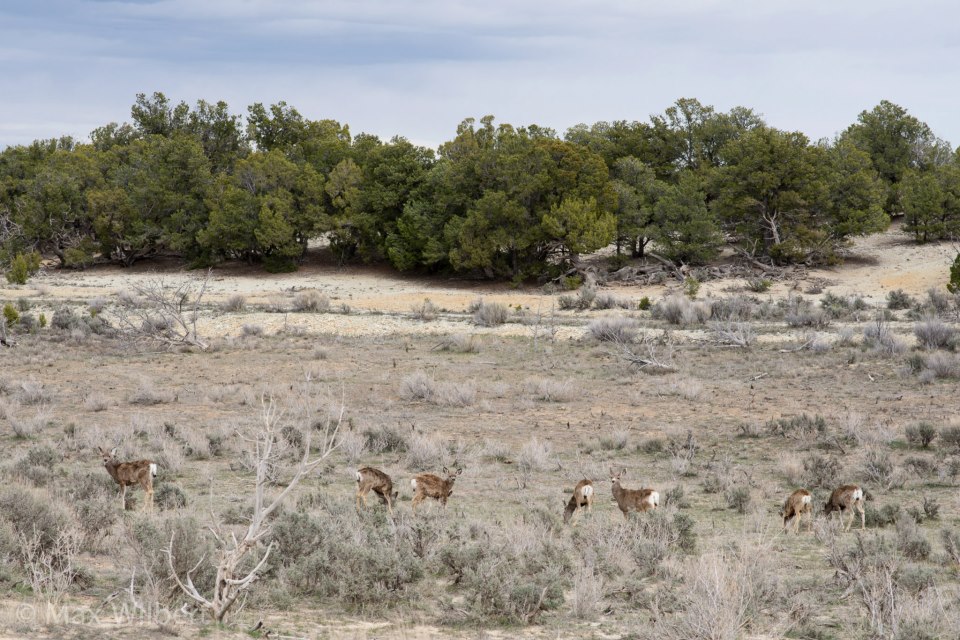
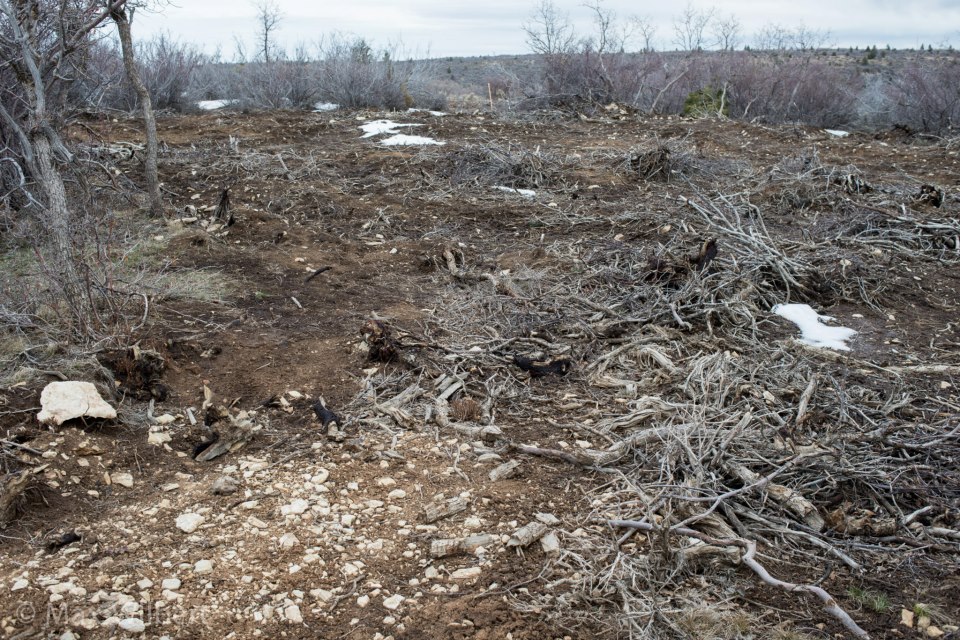
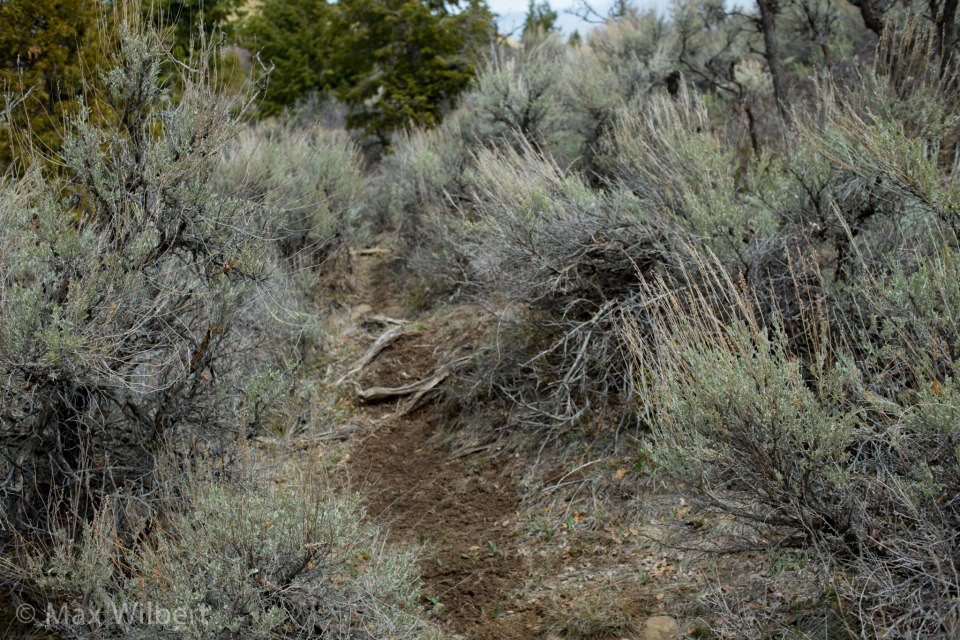
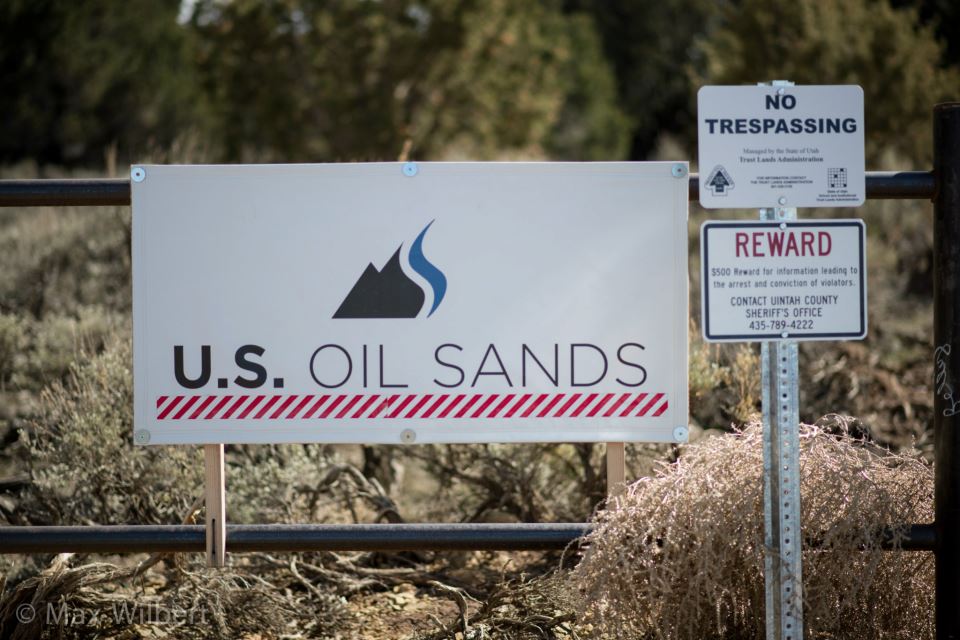


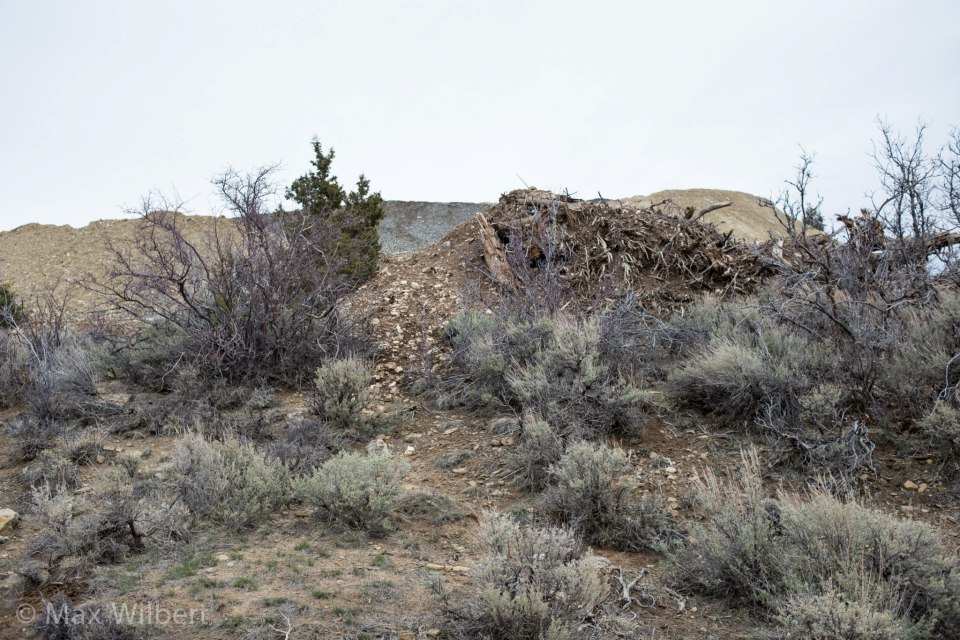
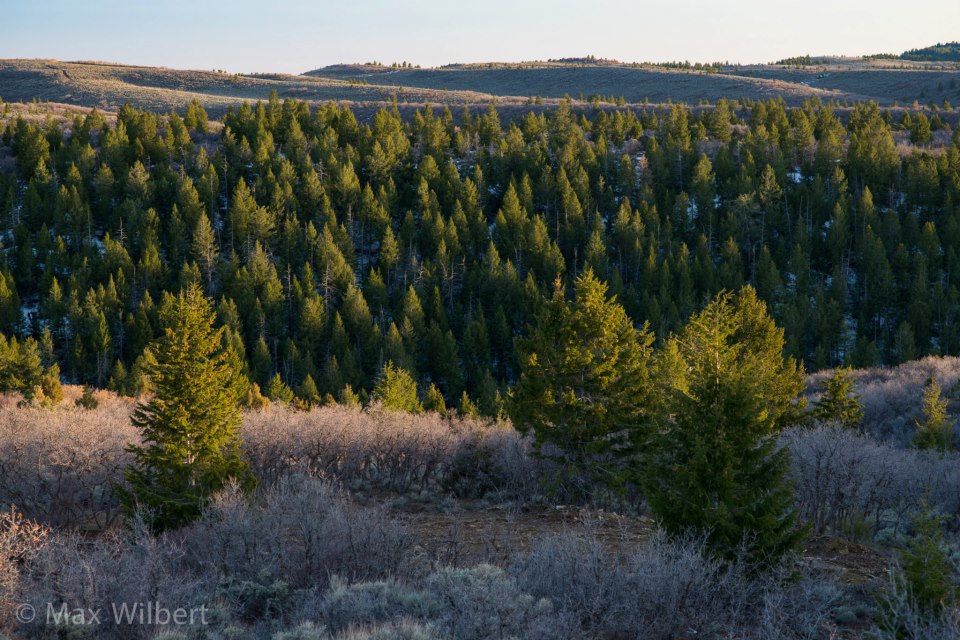
Max Wilbert is a writer and community organizer living in occupied Goshute territory otherwise known as Salt Lake City, UT. He originally hails for occupied Duwamish territory known as Seattle, and organizes primarily with the Great Basin Chapter of Deep Green Resistance to fight injustice and promote strategies towards the dismantling of industrial civilization.
You can contact Max Wilbert at greatbasin@deepgreenresistance.org
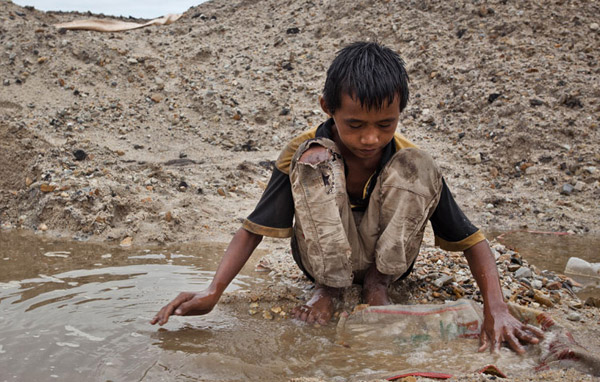
by Deep Green Resistance News Service | Apr 26, 2013 | Mining & Drilling, Worker Exploitation
By Mongabay
Mobile device giant Samsung has admitted to using tin sourced from a controversial mining operation on the Indonesian island of Bangka, where unregulated mining kills 150 miners a year and causes substantial environmental damage, reports The Guardian and Mongabay-Indonesia.
Samsung’s admission came after a campaign by Friends of the Earth, which led to nearly 16,000 customers contacting the company. In an email sent the customers and the NGO, Samsung said it is investigating the matter.
“While we do not have a direct relationship with tin suppliers from Bangka Island, we do know that some of the tin that we use for manufacturing our products does originate from this area,” Samsung said. “We are also undertaking a thorough investigation of our supply chain in the region to better understand what is happening, and what part we play.”
Bangka and neighboring island Belitung account for about 90 percent of Indonesia’s tin production. Mining on the islands involves more than half the population, but is largely unregulated, leading to a raft of ills. An investigation last year by the Guardian and Friends of the Earth found widespread use of child labor, clearing of forests, and degradation to coral reefs. Accidents kill scores of people each year.
After the investigation, Friends of the Earth called on Samsung and Apple to disclose whether they use tin from Bangka in their smartphones and tablets. To date only Samsung has admitted to sourcing Bangka tin, a point highlighted by Friends of the Earth.
“It’s great Samsung has taken an industry lead by tracking its supply chains all the way to Indonesia’s tin mines and committing to taking responsibility for helping tackle the devastating impact that mining tin for electronics has on people and the environment,” said Craig Bennett of Friends of the Earth in a statement.
“Rival Apple is already playing catch-up on the high street in terms of smartphone sales – it’s time it followed Samsung’s lead by coming clean about its whole supply chains too.”
From Mongabay: “Samsung admits to using tin linked to child labor, deforestation; Apple mum on sourcing“












